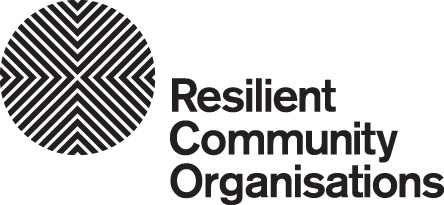Understanding Disaster Recovery
Recovery is the process a community goes through after a disaster or emergency and is one of the four emergency management phases discussed in Step 2.
Recovery is the coordinated process of supporting affected communities in recovery in:
- the social environment
- The built environment
- The economic environment
- the natural environment
Some important things to know about recovery include:
- Recovery goes beyond providing food and shelter
- Recovery is very complex
- Recovery takes a long time
- Recovery starts immediately
- There is no clear definition of when recovery stops. [1]
There is an increasing understanding in Australia of the complex nature of recovery and the time it takes.
Recovery is so much more than rebuilding houses.
In 2009 the Australian National Principles for Disaster Recovery were endorsed. The Principles can be downloaded below and should be used to guide you in your recovery work. The principles for successful recovery are:
- Understanding the context
- Recognising complexity
- Using community-led approaches
- Ensuring coordination of all activities
- Employing effective communication
- Acknowledging and building capacity[2]
Both the National Principles for Disaster Recovery and the four environments model are used to inform emergency management arrangements throughout Australia.
In some jurisdictions consultative bodies are convened for each of the four environments. After an emergency advisory groups for each of the four environments are often created to guide recovery activities. It is important that community organisations seek out opportunities to participate in these groups so that we can share our expertise.
Example
During the devastating natural disasters in late 2010 and early 2011, Neighbourhood Centres in impacted communities played a vital role in the local disaster management response. Very quickly, centres became the place where people gravitated to in the spontaneous outpouring of community support for impacted householders. Centres undertook many roles including:
- Community Recovery Centres
- developing and distributing information on local support services
- organising counselling referrals, information and support services
- participating in feedback sessions related to local recovery efforts
- coordinating the distribution of goods and financial donations
- providing household goods, food, fuel or third party payment vouchers
- liaisingwithregionalcouncilsandotherkeystakeholdersregardingpostsupportstrategies and
- future planning activities
The role of Neighbourhood Centres in the recovery process has been an important part of Queensland’s recovery and is an excellent example of the flexibility resourcefulness and community connectedness of these Centres.
Increasingly Neighbourhood Centres are becoming ‘multi-service hubs’ within the broader human service system. They actively promote community engagement and connectedness. Service delivery is flexible and culturally inclusive providing a range of community activities that best meet the identified needs of vulnerable individuals and families.
Neighbourhood Centre Initiative Review Date: August 2011 Department of Communities, Queensland Government, p. 6.
Things to Consider
In preparing for recovery some of the areas where plans can be in place are:
- Supporting the Supporters
- Funding
- Donated goods
- Spontaneous volunteers
1. Supporting the Supporters
Vicarious trauma is a very real and very serious health concern for community service organisations’ staff and volunteers, especially when working with disaster affected individuals and communities.
The post-emergency working environment can be extraordinarily stressful and a lack of planning and resources can result in the inadequate supervision of staff and volunteers, people practicing at the edge of their competence (or even beyond it), high pressure, long hours and an unwillingness of some to admit that they need help too.[3] The Evaluation of the Psychosocial Response to the 2009 Victorian bushfires recommended clear outlines of roles and responsibilities, better management of staff resources, as well as trauma training, supervision and peer support as a means of addressing this.[4]
Effective leadership is vital in ensuring that staff and volunteers are well cared for. It is an organisation’s leaders who set the culture of the workplace. It is important to communicate clearly, make decisions transparently and enforce acceptable working hours. After an emergency many workers will want to go above and beyond their usual commitments and hours. It is important that the short term benefits of staff and volunteers working extra hours to meet service needs, and their desire to help their community, are not prioritised over the longer term benefits of their physical and psychosocial wellbeing. Remember, recovery is a marathon not a sprint. Employees working excessive hours will not be able to last the distance and may risk suffering from vicarious trauma.
Consider the adequacy of your psychological support arrangements. Standard EAP services may not be appropriate or sufficient. For those of you who provide regular supervision of staff, you may need to reassess the frequency of this to ensure your personnel are adequately supported during a demanding time. Once again, leading by example will help create an organisational culture that promotes taking proactive measures to maintain wellbeing.
te with the broader community effectively.
2. Funding
Funding is always an issue for the community sector and the post-emergency environment is no different.
Can you divert your existing funding to emergency recovery activities?
Your pre-emergency activities may not be as relevant or urgent to your clients in the recovery phase however not all funding arrangements can be renegotiated. Some funding contracts are particularly rigid and do not make allowances for the impacts of disasters on an organisation’s capacity to deliver services as contracted or provide for a pre-agreed proportion of resources to be used in the delivery of services to meet needs during relief and recovery.
In the aftermath of the 2009 bushfires one community service organisation mobilised its entire workforce – on a voluntary basis – to participate in the response and recovery efforts. It was not able to recover the costs expended in seconding its professionals to the response effort. More seriously, when the organisation resumed normal operations, it was informed by its government funding agency that it was to lose a substantial funding payment because it had missed a contractual reporting deadline while participating in the disaster response. [5]
There is a great need for social support services and coordination positions after a large scale emergency, including counselling, case management, support for frontline staff and recovery coordination workers. However, it is important to understand that funding for these roles may not be provided immediately. Being asked to provide services without receiving immediate confirmation of payment is a significant challenge for community organisations which causes significant financial strain.
3. Donated Goods
In the aftermath of an emergency there may be an outpouring of good will. Whilst this is very heart-warming it can present some challenges to the community organisations who are often required to manage it.
The generosity of the community is often expressed through donations after an emergency however sometimes what is donated is not actually what is needed. When it comes to donated goods, it is often community organisations who are tasked with their coordination and unfortunately this can become quite costly. This is because what is donated is not always what is needed not to mention the costs of storing and transporting goods. The challenges of managing donated goods can be eased through effective communication. Be clear about exactly what it is that is needed and put a timeframe on it. Remember, it is okay to say no. If people want to donate a shipping container of ski gear for your community members up in the tropics, suggest they hold a garage sale to sell the items and donate the funds raised to your community instead.
Donated goods not only present logistical challenges, they can actually undermine the recovery process. It is empowering for people affected by an emergency to be able to be provided with funds to purchase their own new essential items. Furthermore, an influx of donated goods can have negative impacts on local businesses who desperately need customers to stay afloat and contribute to the economic recovery of the community.
4. Spontaneous Volunteers
Spontaneous volunteers are people who are not existing volunteers who wish to volunteer to help after an emergency. These volunteers can be a great support in a time of need but they also present some challenges that need to be considered carefully. Some key questions to consider include:
- Do they have the skills and/or training required to assist?
- Are we able to verify their qualifications and experience? If not, what are the associated risks?
- Will you be able to meet your compliance obligations, such as ensuring volunteers have a valid police or working with children check?
- Do you have the capacity to manage volunteers effectively and safely at a time of increased demand or strain?
- What are their motivations? Whilst many spontaneous volunteers are motivated by a genuine desire to help some may have more ethically questionable motivations.
Remember: the needs of the affected community must be the priority at all times.
It can be really helpful to determine your organisation’s spontaneous volunteer management strategy before an emergency so your team can be confident in making decisions and communicate with the broader community effectively.





